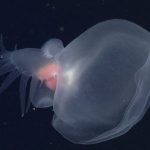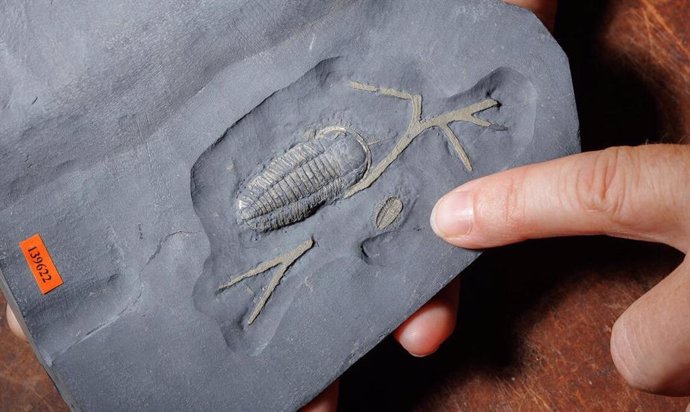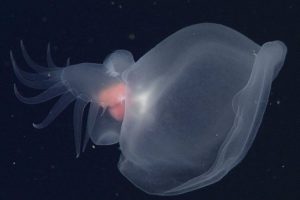An extremely well-preserved fossil of Triarthrus eatoni – DANIEL KIM /AMNH
September 13 () –
A new study has discovered that a species of trilobite with exceptionally well preserved fossils found in New York State has an extra pair of legs under its head.
The research, led by the American Museum of Natural History (AMNH) and Nanjing University in China, suggests that having a fifth pair of head appendages may be more common among trilobites than previously thought. Published in the journal PalaeontologyThe study helps researchers better understand how trilobite heads are segmented.
Trilobites are a group of extinct arthropods whose living relatives include lobsters and spiders. Like other arthropods, The bodies of trilobites are made up of many segments, and the head region is composed of several fused segments. As with other parts of the trilobite body (the thorax and tail), these segments were associated with appendages, whose function varied from sensing to feeding and locomotion.
“The number of these segments and how they are associated with other important traits, such as eyes and legs, is important for understanding how arthropods are related to each other and therefore how they evolved,” he said. in a statement Melanie Hopkins, curator and director of the Museum’s Division of Paleontology.
The head segments of a trilobite can be counted in two different ways: by looking at the grooves (called sulci) on the top of the trilobite fossil’s hard exoskeleton, or counting the pairs of antennae and legs preserved on the underside of the fossilHowever, the soft appendages of trilobites are rarely preserved, and when looking at the trilobite’s head segments, researchers often find a discrepancy between these two methods.
“This fantastic style of preservation allows us to observe 3D appendages in hundreds of specimens directly from the ventral side of the animals, as if we saw the appendages of horseshoe crabs on a beach grabbing them and turning them over“Hou said.
By making comparisons with another trilobite species, the exceptionally preserved Olenoides serratus from the Burgess Shale in British Columbia, Hopkins and Hou propose a model for how the appendages attached to the head in relation to grooves on the exoskeleton. This model resolves the apparent discrepancy and indicates that the trilobite’s head included six segments.: an anterior segment associated with the origin of eye development and five additional segments, associated with a pair of antennae and four pairs of walking legs, respectively.
This study extends the analysis that Hou and Hopkins conducted on Triarthrus eatoni, which showed that the walking legs carry micrometer-sized respiratory structures (gills) and that The function of some of the spines on the walking legs was to keep these gills clean.


![[Img #74341]](https://thelatestnews.world/wp-content/uploads/2024/11/What-standing-on-one-leg-can-tell-us-150x150.jpg)







![[Img #74341]](https://thelatestnews.world/wp-content/uploads/2024/11/What-standing-on-one-leg-can-tell-us-300x200.jpg)


Add Comment